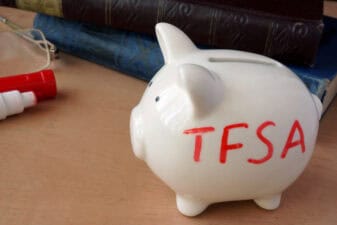I’ve spent some time recently thinking about what makes a great REIT investment.
The first thing investors should look for is a company with a history of making good acquisitions. The quick way of determining that is to look at a REIT’s adjusted funds from operations (AFFO) on a per-share basis. If growth is adding to the bottom line at a faster pace than the REIT is issuing shares, that’s a good thing.
Next, I’d look at the balance sheet. Most REITs aim for a debt-to-assets ratio of under 50%. If its much over that, financing new acquisitions becomes a little tricky.
Finally, investors should take a quick look at management. Some REITs are externally managed, while others have internal managers. No matter what the arrangement, you should want to see a REIT with significant insider ownership. We want to see management teams put their money where their mouth is.
Let’s take a closer look at one REIT that checks off all these boxes — a stock I think could post a very nice performance in 2020.
BSR REIT
BSR REIT (TSX:HOM.U), which has been around in various forms since 1956, is a leading owner of apartment suites in various U.S. markets. Its portfolio focuses on cities with low unemployment and favourable demographics — locations like Dallas, Oklahoma City, Tulsa, Little Rock, and Bentonville. After a few recent non-core asset sales, the portfolio spans 40 properties and more than 9,300 units.
Focusing on residential real estate has a few advantages. People will always need a place to live; that makes the residential part of the sector more recession-proof than focusing on retail or industrial space. It’s an easy-to-understand business that investors can get behind. There will always be ample expansion opportunities. And there’s greater opportunity to raise residential rents, since these tenants are usually in year-long leases.
BSR has another advantage compared to other Canadian REITs. It’s the only sizable U.S. apartment operator trading on the Toronto Stock Exchange. Investors don’t have much choice if they want to get exposure to the U.S. market.
Next, let’s talk about BSR’s CEO, John Bailey. He’s been with the company since 1992 and has more than three decades of real estate experience. He, along with board member Daniel Hughes, owns a whole lot of the company, with a combined ownership stake of approximately 47% of shares. This is the kind of ownership commitment investors want to see.
Let’s pivot to BSR’s balance sheet. The company’s debt-to-assets ratio is in the 46% range after selling off some non-core assets. That positions it well for its next wave of acquisitions.
The company has proven in the past it can make good deals. It has made several deals since debuting on the Toronto Stock Exchange back in early 2018, all of which were accretive to its AFFO on a per-unit basis. In other words, these acquisitions added to shareholder value.
Finally, let’s take a look at BSR’s distribution. The payout is US$0.0417 per unit each month, which is good enough for a dividend yield of just over 4%. That’s a higher yield than comparable Canadian REITs. Investors don’t have to worry about the payout, either. It’s currently just over 75% of AFFO.
The bottom line
The only thing BSR doesn’t have going for it is a cheap valuation. Many analysts would probably declare BSR shares fully valued today.
But it’s easy to argue BSR offers so much it’ll never trade at a value price. Things that make it an excellent investment include high insider ownership, solid growth potential, a great yield, and a history of delivering excellent results. The only thing missing is this stock inside your portfolio.








